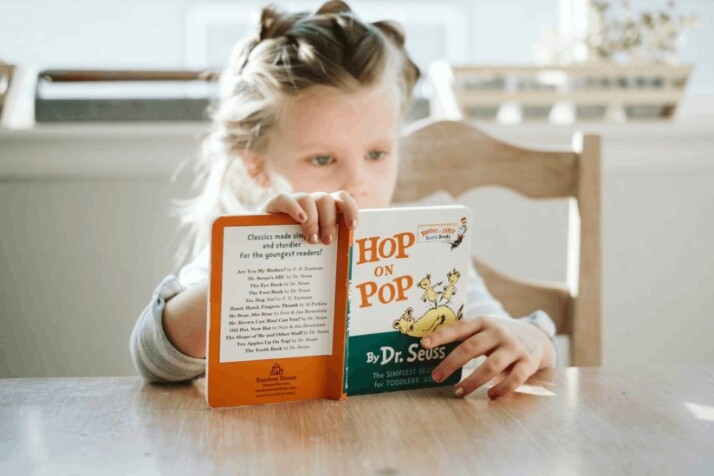Understanding the principles of reading level to your child’s age and grade is essential to a healthy developmental reading process. Leveled reading considers various factors.
What is a Reading Level?
Reading level is the measure of a child’s level of comprehension of text. This is a function of the child’s vocabulary and processing speed. The tool is used by instructors, librarians, and parents to better tailor instruction for children. So they don’t have to struggle through too much material before they are ready.
Different students have different reading levels, and getting your child on the right track to learning can save a lot of time and frustration.
It should be noted that reading levels don’t determine your child’s intelligence or limit them. This is a tool to help your child grow into a more confident and fluent reader.
Is it Important for a Child?
Knowing your child’s reading level will help you choose the books appropriate for your little ones to make reading fun and progressive. As a result, children will enjoy reading the book and build confidence, leading to a lifetime love for reading.
The right books will challenge enough to encourage growth without overwhelming the child. Moreover, it will allow you to help them improve their reading skills to move to the next level.
Each child learns and develops differently. So, when it comes to measuring your child’s reading ability, it is best not to compare them with their peers.
Tools to Evaluate Reading Level
There are many different tools for determining the reading level, and depending on the situation, one might be more useful than the other. You should also keep in mind that reading level is just an estimate.
If a child reads beyond the level this tool estimates, it doesn’t mean they are smart or fast readers. It just means they’re reading more challenging text.

Following are some of the prevalent tools to determine reading levels.
Guided Reading Level (GRL)
GRL is a reading level assessment tool designed specifically for teachers in a classroom. It is a set of consistent guidelines and objective criteria used to assign a reading level to a passage of text.
For the GRL test, children and the instructor sit one-to-one. The child is asked to read a benchmark book standard to their grade level. The system assigns an alphabet to the books based on difficulty. Label A is for the easiest books and all the way through Z for the difficult ones.
During the test, the teacher assesses the student’s reading comprehension through questions and takes notes of any missed words.
GRL may not be the best reading tool for parents because it is based on finely analyzing a text. However, it’s an excellent tool for teachers to use when evaluating the reading level of their students.
Developmental Reading Assessment (DRA)?
Developmental Reading Assessment is a standardized test to determine a child’s ability to understand and use words in meaningful ways. DRA is typically used to identify whether a child is on grade level and then provide feedback on the child’s current literacy skills.
Like GRL, children attend the DRA test by sitting individually with a reading specialist or instructor to read a book.
Several factors are considered to determine the level in this test, such as reading comprehension, phonemic awareness, and fluency.
The DRA books start with a label A as the easiest, then switch to a numeric system counting from 1 to 80.
Kindergarten reading level falls between 1-and 3, whereas level 80 stands for eighth-grade reading.
Lexile Framework?
The Lexile framework uses a Lexile scale to rank books in terms of increasing difficulty. Educational institutes use this tool to assess a child’s reading ability by taking a standardized test.
The test scores are converted to Lexile measures to choose appropriate books of matching scores. Lexile levels are indicated with a number and the letter L following it. The measure starts from as low as 0L to the maximum measurement being 2000L.
Children are motivated to read between 100L below to 50L above their Lexile range. For instance, If a child reads at a Lexile measure of 600L, he should be able to read books ranging from 500L to 650L.
Schools will measure a child’s reading level multiple times a year to graph their progress. They choose appropriate books to encourage the kids to do independent reading.
Conclusion
Kids are often told they need a specific reading level to perform well academically or even socially. So, how can a parent determine their child’s reading level?
This article covers the basics and provides you with the tools to identify your child’s reading needs to best support them. With this information, you may set your child up for success with the right texts to help them grow.
Explore All Readability Articles
What is Reading? — Making Sense of Letters and Symbols
When studying the English language, you should familiarize yourself with its different concepts. It includes spelling, vocabulary, grammar, and reading.…
What is Readability Score? — a Quick Guide
Your text should cater to all kinds of readers. When you’re writing an article that intends to reach various individuals,…
Causes of Reading Comprehension Problems
Reading comprehension is the ability to understand and interpret written words, connecting the information in the text with previous knowledge.…
What Is ZPD Reading Level?
Everyone unique and we all have a unique understanding of the world. So what should the level of difficulty be…
The Best ELL Strategies for Reading!
Non-native English speakers can be proficient readers in their original tongue. However, those who are enrolled in an ELL (English…
These Are the Best Practices in Reading!
Best practices have been a topic of discussion in the reading education community for a long time. Among these best…
